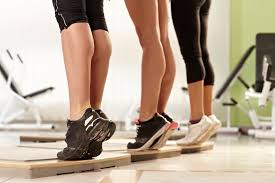Why Strong Calf Muscles Are Essential for Heart Health and Blood Circulation: Explained
By Lokmat English Desk | Updated: September 11, 2024 18:54 IST2024-09-11T18:52:43+5:302024-09-11T18:54:44+5:30
Often termed as the "second heart," the calf muscle is crucial for maintaining effective blood circulation throughout the body, ...

Why Strong Calf Muscles Are Essential for Heart Health and Blood Circulation: Explained
Often termed as the "second heart," the calf muscle is crucial for maintaining effective blood circulation throughout the body, complementing the heart’s function. While the heart pumps blood to the extremities swiftly, the return journey of oxygen-poor blood to the heart requires additional support, especially against gravity. This is where the calf muscle pump becomes essential.
How the Calf Muscle Pump Operates
The process of venous return, which involves returning deoxygenated blood from the legs to the heart, relies on several mechanisms. The calf muscle pump, along with the ankle pump, helps push blood upwards through the veins. Here’s a simplified look at how it works:
Foot Pump: Each step you take contributes to venous return. When your heel contacts the ground, blood pools in the veins. As the front of your foot lands, this pooled blood is pushed upwards.
Soleus Muscle: The blood then moves into the veins within the soleus muscle, which stretches from the ankle to the knee. The contraction of this muscle applies pressure to the veins, aiding in the upward movement of blood.
Vein Transfer: The blood is then directed into veins that run from the knee to the groin, where it continues to the abdominal cavity and travels through the vena cava to the heart, facing less resistance from gravity.
This network of veins, though intricate, works collectively to ensure blood reaches the heart efficiently. A well-functioning calf muscle pump is crucial for maintaining this process and preventing conditions such as varicose veins and spider veins.
Challenges Faced by the Calf Muscle Pump
One significant limitation of the calf muscle pump is inactivity. When you remain still for extended periods, such as sitting or standing, the calf muscles aren’t engaged to push blood upwards, slowing down venous return. This can lead to blood pooling in the veins, increasing the risk of varicose veins, spider veins, and blood clots.
Weak or inefficient venous valves can result in venous insufficiency, a condition where blood flows backward and accumulates in the lower legs, causing swelling, pain, cramping, and ulcers. It’s also linked to deep vein thrombosis, where a blood clot in the deep veins can pose serious health risks. Inactivity, excess weight, and a sedentary lifestyle heighten the risk of venous insufficiency. Thus, maintaining calf muscle strength is vital.
Maintaining Strong Calf Muscles
Research indicates that individuals with chronic heart failure often have smaller calf muscles compared to those with healthy hearts. These smaller muscles must work harder, leading to exhaustion and poor exercise performance. Muscle atrophy, which naturally occurs with age or from a sedentary lifestyle, accelerates this issue. A balanced diet and regular exercise are key to keeping your calf muscles strong. Strengthening exercises can help ensure efficient blood circulation. For optimal health, integrate these exercises into your routine:
Calf Raises: Stand with feet together or apart, lift your heels, then lower them. Repeat for at least 10 reps. For added challenge, perform this on a step or while seated.
Lunges: With feet hip-width apart, step one foot forward and bend your knees, lowering the back knee toward the ground. Return to the starting position and switch legs. You can perform this in place or as walking lunges.
Toe Walks: Stand on your toes and walk around for up to 60 seconds. Start with shorter durations and gradually increase. Use weights if your calves are already strong.
Foot Pumps: While seated or lying down, flex your foot by pointing your toes forward and then pulling them back. Continue this movement to stimulate your calves.
Additionally, stretching is essential for maintaining calf muscle flexibility. A simple calf stretch involves using a band or towel to pull your foot towards your body while keeping your leg extended. Incorporating these practices into your daily routine can significantly enhance calf muscle strength and overall circulatory health. So, make an effort to stay active and maintain a nutritious diet to support both your heart and calf muscles.
Open in app